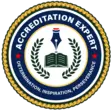- Home
- About AEC
- Our Services
Accreditatio
Accreditatio 2
Accreditatio 3
- Accreditation
- Risk Management
- Podcast
- Articles
- Resources
- Contact Us
- Home
- About Us
- Our Services
- Accreditation Approval
- All State Approval
- State Authorization BPPE
- Accreditation Compliance & Post-Survey Corrective Action
- Accreditation-Bureau Site Visit
- Board Governance
- Strategic Planning in Higher Education
- Continuing and Higher Education Accreditation
- Accreditation process
- Self Evaluation (Self-Study)
- Curriculum Development
- Veterans Approval G.I-bill
- I-Train Approval
- International Student (SEVP)
- Equal Canada Accreditation
- Accreditation
- Risk Management
- Podcast
- Articles
- Resources
- Contact Us
Types of Accreditation in Higher Education
Institutional accreditation is typically divided into regional and national accreditation, each serving different types of institutions and purposes. These categories of higher education accreditation ensure that institutions meet specific standards and criteria relevant to their mission and educational offerings.


Regional Accreditation
Scope:- Regional accreditation is the most prestigious and widely recognized institutional accreditation in the United States.
- It focuses on degree-granting institutions, including public and private universities, colleges, and community colleges.
- There are seven regional accrediting organizations in the U.S.:
-
- Middle States Commission on Higher Education (MSCHE)
- New England Commission of Higher Education (NECHE)
- Higher Learning Commission (HLC)
- Southern Association of Colleges and Schools Commission on Colleges (SACSCOC)
- Northwest Commission on Colleges and Universities (NWCCU)
- Western Association of Schools and Colleges Senior College and University Commission (WSCUC)
- Accrediting Commission for Community and Junior Colleges (ACCJC) of the Western Association of Schools and Colleges (WASC)
- Ensures quality and improvement of higher education institutions.
- Facilitates credit transfer between institutions.
- Often required for federal financial aid eligibility.


National Accreditation
Benefits:- National accreditation typically applies to specialized or vocational institutions, including technical schools, online colleges, religious institutions, and certain professional schools.
- It is less comprehensive than regional accreditation but focuses on specific educational and operational aspects relevant to these institutions.
- Examples of national accrediting organizations include:
- Accrediting Commission of Career Schools and Colleges (ACCSC)
- Distance Education Accrediting Commission (DEAC)
- Council on Occupational Education (COE)
- Accrediting Council for Independent Colleges and Schools (ACICS)
- Association for Biblical Higher Education (ABHE)
- Transnational Association of Christian Colleges and Schools (TRACS)
- Ensures quality in specialized and vocational programs.
- Supports federal financial aid for institutions with national accreditation.
- Recognized for specific fields of education and professional training.
Differences between Regional and National Accreditation
Recognition and Prestige:- Regional accreditation is generally considered more prestigious and is widely accepted for credit transfers and graduate school admissions.
- National accreditation often focuses on career, technical, and trade schools and may be less universally recognized for credit transfers.
- Regional accrediting bodies assess the entire institution, including academic programs, faculty, governance, and financial health.
- National accrediting bodies often focus on specific types of programs or institutions, emphasizing practical, career-oriented education.
- Both regional and national accreditation can qualify institutions for federal financial aid, but the type of accreditation can impact the ease of transferring credits and overall degree recognition.
- Council for Higher Education Accreditation (CHEA): Institutional Accreditation
- S. Department of Education: Accreditation in the United States
- Accrediting Commission of Career Schools and Colleges (ACCSC): ACCSC Overview
- Distance Education Accrediting Commission (DEAC): DEAC Overview


Initial Accreditation Services
If you're new to state approval, start with our initial questionnaire. This provides a comprehensive understanding of your organization's readiness for state approval. FREE Initial Accreditation Assessment Questionnaire

Reaccreditiation (reaffirmation) Services
Our goal is to help you achieve successful approval from your state and ensure the process is as efficient and stress-free as possible for you and your team. FREE (Reaffirmation) Assessment Questionnaire

Our approach to reaccreditation (reaffirmation) is comprehensive and strategic. We begin by conducting a detailed gap analysis to identify areas your organization may need to fully meet updated standards. This analysis helps pinpoint specific aspects of your operations that need enhancement or adjustment, providing a clear roadmap for your reaccreditation (reaffirmation) efforts in line with higher education accreditation classifications.

What is the Significance of Accreditation?
Accreditation involves an evaluation process that assesses the quality of higher education institutions and their programs to ensure they meet established standards. It validates the authenticity and quality of your institution's education, offering assurance to prospective students and governing bodies. Accreditation options for higher education institutions provide various pathways to demonstrate compliance with these standards, further enhancing institutional credibility and reputation.
Do I Need To Get Accredited?
While not mandatory, accreditation is highly advantageous. It demonstrates the high standard of education your institution offers and provides a host of benefits that can significantly enhance your institution's reputation and appeal to prospective students. Understanding the various postsecondary accreditation categories can help you choose the most appropriate and beneficial path for your institution, ensuring that you meet the highest standards of educational quality.
- Qualification for Exams: Certain licensing or certification exams require candidates to complete an accredited program.
- Post-Graduation Success: Employers often prefer graduates from accredited institutions, making your institution more appealing to prospective students.
- Distance Learning Credibility: Accreditation proves that online programs provide the same quality of education as traditional institutions, persuading hesitant students to enroll.
- Credit Transfers: Accreditation facilitates credit transfers between institutions, making your institution more attractive to students considering a transfer.
- Financial Aid Eligibility: Students can only access federal and state loans if their institution is accredited.


Programmatic Accreditation
Scope:- Programmatic accreditation focuses on specific programs, departments, or schools.
- It evaluates the quality and effectiveness of individual educational programs in fields such as nursing, engineering, business, and law.
- The main goal is to ensure that the specific program meets the standards and requirements of the profession it prepares students for.
- Programmatic accreditation often involves a more detailed examination of the program's curriculum, faculty qualifications, and student outcomes.
- Examples include the Accreditation Board for Engineering and Technology (ABET), the Commission on Collegiate Nursing Education (CCNE), and the Association to Advance Collegiate Schools of Business (AACSB).
- Indicates that a program meets the profession's standards, which can enhance graduates' employability.
- Some professional licensure and certification exams require graduation from an accredited program.
- Increases the program's appeal to prospective students who seek quality education in specific fields.
- Accreditation Board for Engineering and Technology (ABET): What is Program Accreditation?
- Commission on Collegiate Nursing Education (CCNE): Programmatic Accreditation
Programmatic Accreditation
Focus Area:
- Institutional accreditation assesses the entire institution.
- Programmatic accreditation evaluates specific educational programs.
Accrediting Agencies:
- Different accrediting agencies specialize in institutional vs. programmatic accreditation.
- Institutional agencies cover broad educational standards, while programmatic agencies focus on standards relevant to specific professions.
Outcome and Benefits:
- Institutional accreditation supports the institution's overall integrity and eligibility for funding.
- Programmatic accreditation supports the program's quality and relevance, often influencing professional licensure and student choice.
FAQs for Programmatic Accreditation
What is Programmatic Accreditation?
Programmatic accreditation, also known as specialized accreditation, is a process that evaluates the quality and effectiveness of specific programs, departments, or schools within an institution. It ensures that these programs meet the standards and requirements of the profession they prepare students for, such as nursing, engineering, business, and law.
Why is Programmatic Accreditation Important?
Programmatic accreditation assures that a program meets the rigorous academic and professional standards of the profession. This can enhance graduates’ employability, ensure eligibility for licensure and certification exams, attract prospective students, and open doors to federal and state financial aid.
How Does Programmatic Accreditation Differ from Institutional Accreditation?
Institutional accreditation assesses the entire institution, focusing on overall integrity, mission, and educational quality. In contrast, programmatic accreditation evaluates specific educational programs, focusing on standards relevant to specific professions. Different accrediting agencies specialize in institutional versus programmatic accreditation.
Which Accrediting Bodies Handle Programmatic Accreditation?
Examples of accrediting bodies that handle programmatic accreditation include the Accreditation Board for Engineering and Technology (ABET), the Commission on Collegiate Nursing Education (CCNE), and the Association to Advance Collegiate Schools of Business (AACSB). Each accrediting body has specific standards and criteria for the programs they accredit.
What Are the Key Benefits of Programmatic Accreditation?
The key benefits include enhanced reputation and recognition, increased student recruitment and graduate employability, eligibility for federal and state financial aid, continuous improvement of educational programs, and increased stakeholder confidence. It also ensures that the program meets the professional standards required for licensure and certification.
What Are Common Requirements for Programmatic Accreditation?
Common requirements include a detailed examination of the program’s curriculum, faculty qualifications, student outcomes, and resources. Programs must demonstrate that they meet specific standards the accrediting body sets, including maintaining high educational quality and continuous improvement processes.
How Can Institutions Prepare for Programmatic Accreditation?
Institutions can prepare by familiarizing themselves with the accrediting body’s standards, engaging stakeholders early, conducting a comprehensive self-assessment, developing a detailed accreditation plan, maintaining comprehensive documentation, implementing continuous improvement processes, and preparing thoroughly for the site visit.
The Crucial Role Of Faculty and Staff in Programmatic Accreditation:
Faculty and staff are not just participants in the accreditation process, but key drivers of its success. Their active involvement in self-assessments, input during preparation, and ensuring that curriculum and teaching methods meet accreditation standards, are all vital. By engaging in continuous improvement activities, they demonstrate their commitment to maintaining high educational quality. Their participation and dedication are essential for a successful accreditation outcome, making them feel valued and integral to the institution’s operations.
The Positive Impact of Programmatic Accreditation on Students:
Programmatic accreditation ensures that students receive a high-quality education that meets professional standards. This not only enhances their employability but also their eligibility for licensure and certification. Accredited programs also make students eligible for federal and state financial aid, providing greater access to educational opportunities. These benefits instill hope and optimism in students, assuring them that their educational journey is backed by a robust and recognized accreditation process.
The Process Of Programmatic Accreditation Site Visits:
During a site visit, representatives from the accrediting body visit the institution to review documentation, meet with faculty, staff, and students, and observe the program in action. This comprehensive review helps verify that the program meets accreditation standards. Institutions should thoroughly prepare for this visit by conducting mock site visits and ensuring all stakeholders understand their roles and responsibilities.
State Approval Readines
If you're new to state approval, start with our initial questionnaire. This provides a comprehensive understanding of your organization's readiness for state approval.
Our goal is to help you achieve successful approval from your state and ensure the process is as efficient and stress-free as possible for you and your team.
“Accreditation Expert Consulting Team”
Request call back
Our goal is to help you find exactly what you need and explore your options.












